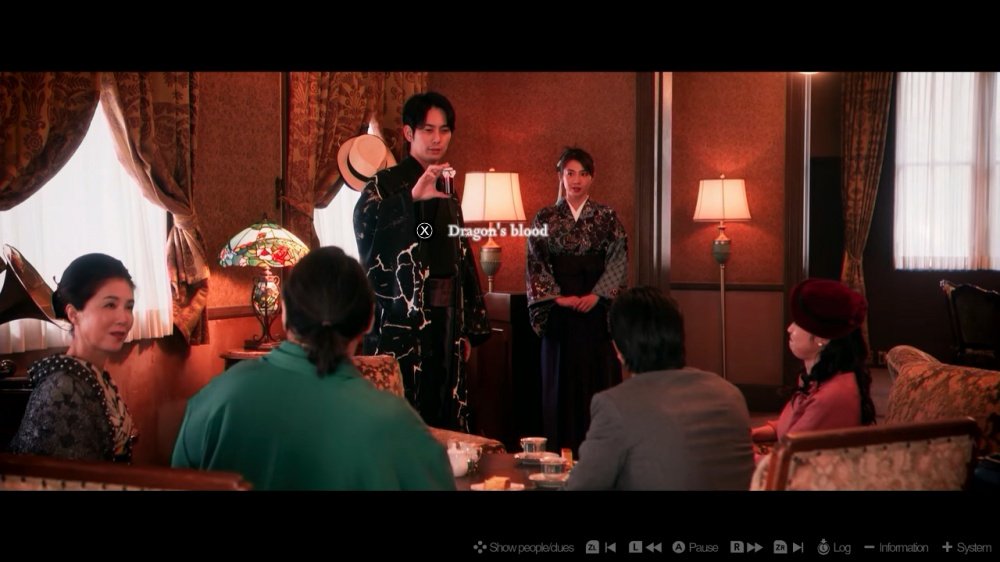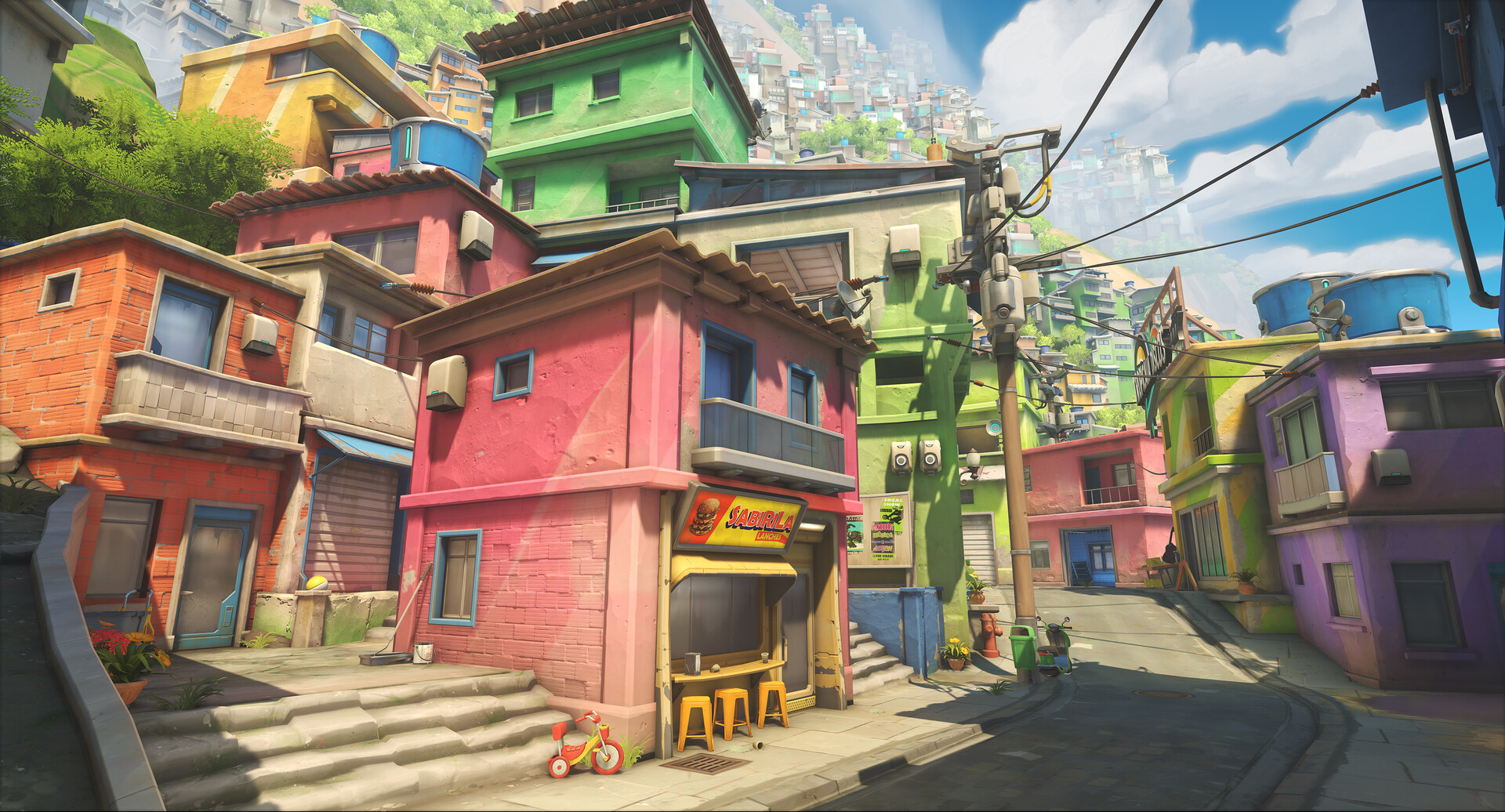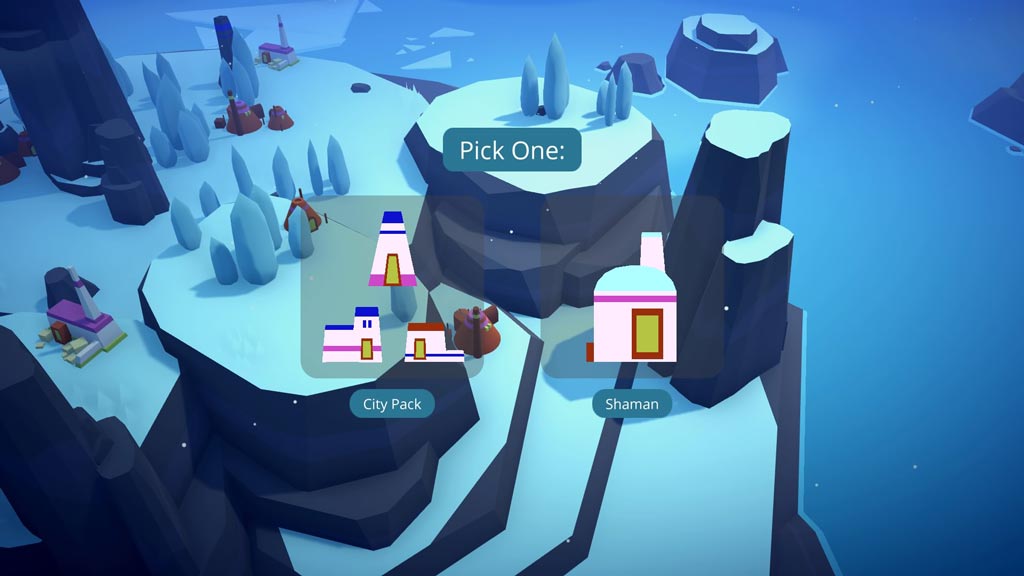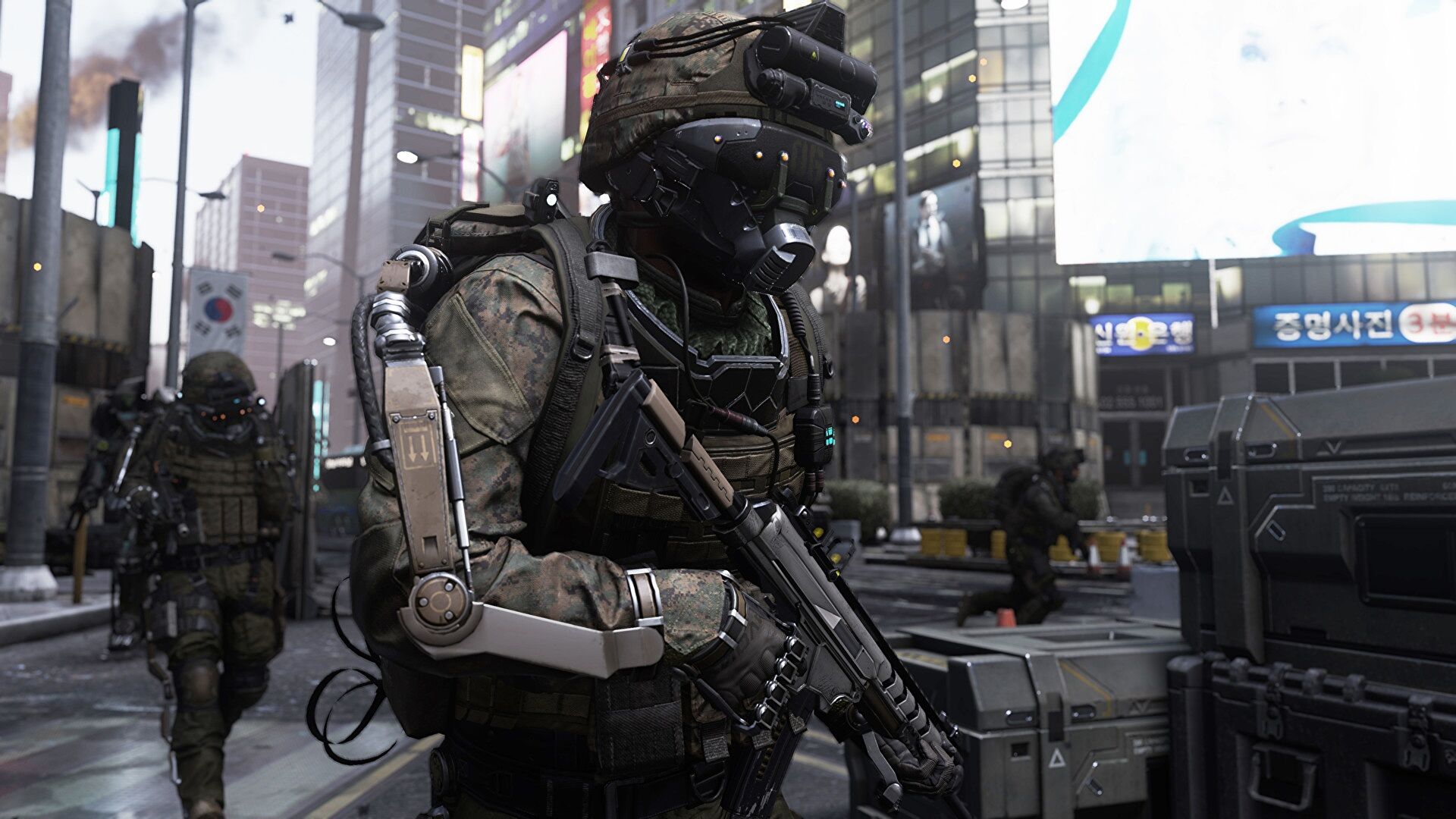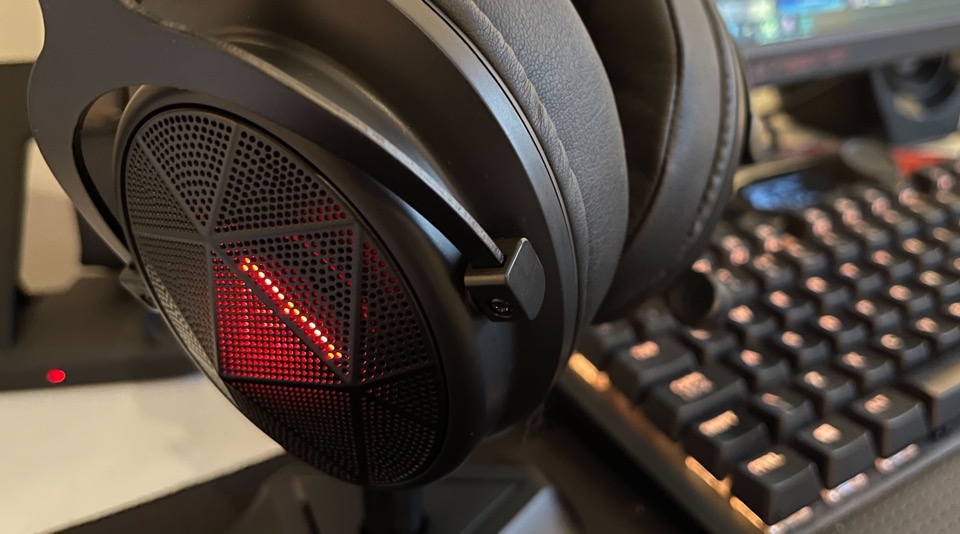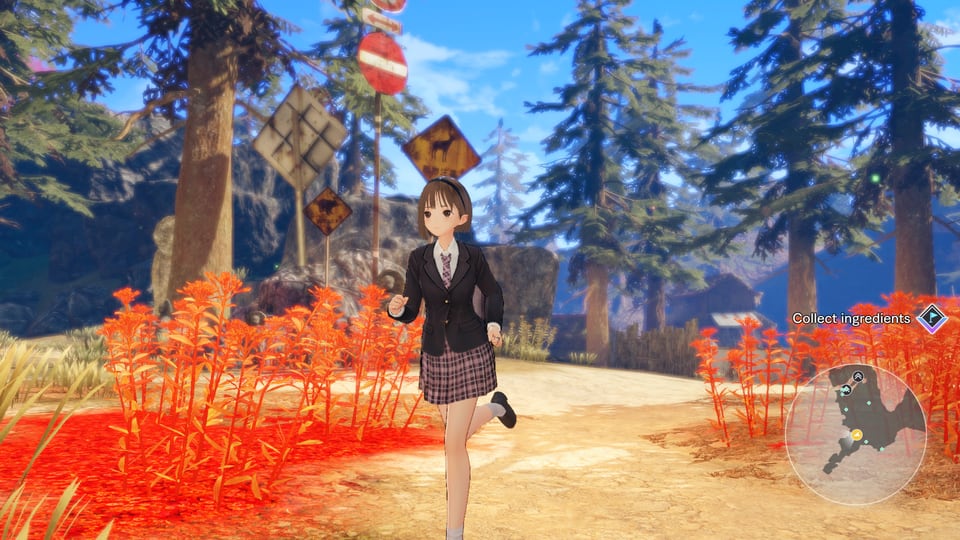
When I reviewed the original Blue Reflection back in 2017, I noted that it was a slightly flawed game that felt like the foundation for something greater. Publisher Koei Tecmo seems to agree, as they’ve laid out massive plans to continue the franchise through this year and the next. A television anime named Blue Reflection Ray just finished airing, a mobile game titled Blue Reflection Sun is in the works, and a proper console sequel titled Blue Reflection: Second Light has just arrived.
Long-time Atelier developer Gust created the first Blue Reflection game, and in the years since then the team has done incredible work with the new Atelier Ryza series. Gust is back for Blue Reflection: Second Light, and the special sauce the team cooked up for Atelier Ryza has been sprinkled generously on this sequel, resulting in a comfy and polished JRPG that lives up to the potential established in the first game.
There’s now a lot of Blue Reflection media to explore, but it isn’t mandatory to enjoy this sequel. Story elements and characters related to the anime and the first game that spring up in Blue Reflection: Second Light will mean a little more to you if you’re already familiar with them, but this is still a standalone story through and through. The game opens with Japanese highschooler Hoshizaki Ao picking up her phone and being whisked away to another world. This isn’t the typical isekai story of being transported to a high-fantasy kingdom or a sci-fi city, though – Ao is transported to an empty school building surrounding by nothing but endless water and a pathway to a strange realm known as The Faraway.
She isn’t entirely alone here. A trio of girls have seemingly been living in this empty school together and take Ao in, but they don’t remember how long they’ve been there, or even any memories from before their time in this mysterious place. And so, as the one person with memories from the normal world still intact, your goal as Ao is to help your friends recover their memories and, hopefully, find a way back home.
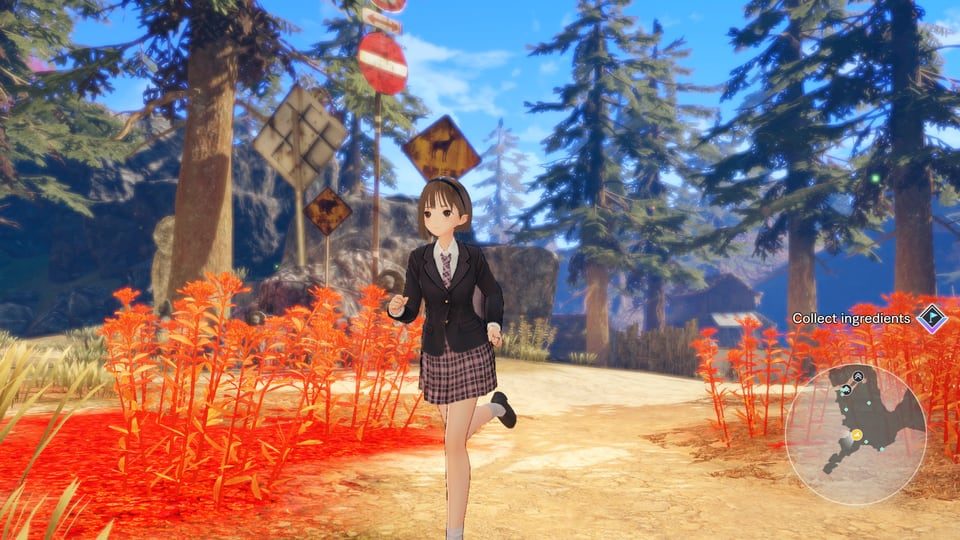
Everything you do in the game, from exploring dungeons and crafting items to expanding the school and fulfilling your friends requests, all contributes to recovering their memories, as well as causing new amnesiac characters to appear. The game takes a couple of slow hours to get going, but once the mysteries are revealed and your crew have some time together under their belts, it’s smooth sailing through equal parts enjoyable slice-of-life episodes and eyebrow-raising dramatic developments. There’s a huge air of mystery to the world and circumstances of the game, and it’s very satisfying to unravel it all as the game progresses.
Your time in Blue Reflection: Second Light is split pretty evenly between the schoolgrounds and The Faraway. New regions in The Faraway appear as you progress through the story and recover memories, and these mysterious areas serve as the dungeons in the game. These areas are a massive upgrade from the quirky yet small areas of the first game. Regions of The Faraway feel like a dreamlike, surreal version of the worlds reclaimed by nature that you see in games like The Last of Us or Horizon: Zero Dawn. Elements of the real world like street signs and buildings are smashed together with otherworldly fauna and gravity-defying debris. They aren’t huge open environments, but they’re still a delight to explore and soak-in – with a fully-featured photo mode, you can take your time appreciating every angle of the environment.
You aren’t just there to wander and sightsee, though. Enemies crawl around in The Faraway, and if you run into one or smack one with your weapon, you’ll dive into battle. Most of your crew has been mysteriously equipped with magic rings that give them the ability to fight monsters in The Faraway, and these battles take heavy inspiration from the delightful real-time hybrid combat of Atelier Ryza. Character portraits are constantly sliding along an action timer, and when they arrive at the middle, that friend or foe gets to attack. Your three party members are assigned to a different button on the controller, and pressing their button will pause combat and bring up an ability menu for you to assess. You can go for simple skills that cost a bit of Either, but as each character’s Gear shifts mid-battle you’ll be able to store more Ether and use stronger abilities that cost even more Ether.
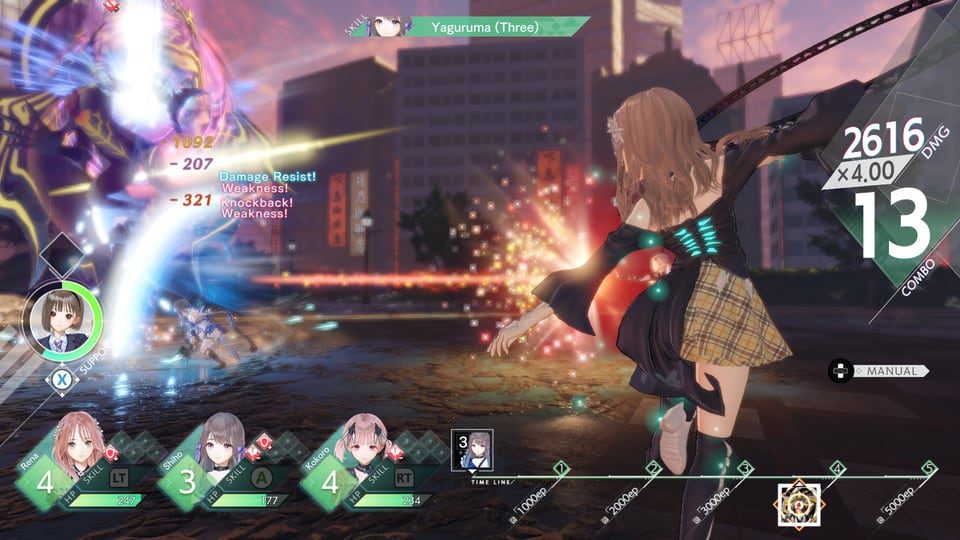
The combat loop is simple, but there’s plenty of depth to it. You grow stronger by leveling up in battle, but you’ll need to engage characters in the schoolgrounds by talking to them or fulfilling their requests to get Talent points. This currency is used to learn new abilities for characters across various talents, giving you a bit of wiggle room to spec your crew in specific ways.
A major wrinkle of combat is that successive attacks trigger a damage-multiplying combo meter, so you’ll always want characters around that can help keep that meter from being reset by enemies. Combat in the original game dragged on and had little challenge to it, but the real-time turn-based action in Blue Reflection: Second Light is addictive, and the way the game loops story scenes and character development into your combat enhancements is genius.
It isn’t just the combat system that Blue Reflection: Second Light lifts from Atelier. Thanks to crafting and installation-building systems, the overall game flow is incredibly similar to that of recent Atelier games. Crafting isn’t nearly as involved – you don’t have to worry about synthesis charts or anything wild, but you do get to pick and choose which ingredients to pop into your recipes, resulting in slightly different effects and more bonding time for the girls. Building installations does feel a bit limited, as you’ve only got certain certain pre-determined spots on the school map to place things – a far cry from the freedom of a game like Animal Crossing: New Horizons, for example. Still, it’s satisfying to see the schoolgrounds slowly expand and get a bit more lively, and building these facilities contributes greatly to the progression of the story.
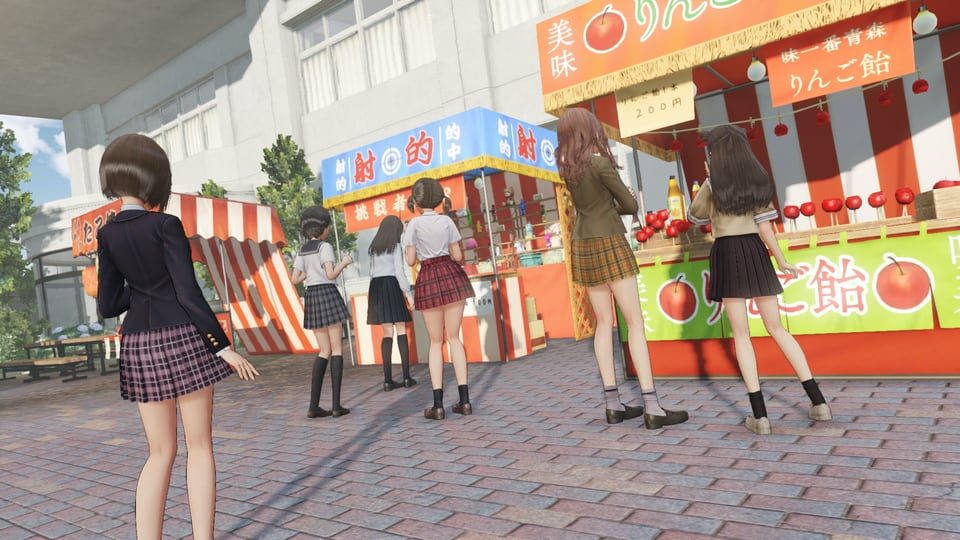
It would be rude not to gush over the aesthetic of Blue Reflection: Second Light a bit more. The environments are richly designed and unique visual treats, but the whole game is sharp and polished. Characters have some of the most expressive facial animations I’ve seen in a JRPG of this scale, and there’s a a painterly, almost watercolour style to some of the textures in the game that adds a lot to the aesthetic. The first game had one of the most addictive and unique soundtracks I’d ever heard in a JRPG, and the sequel ups the ante – wild electronic sounds and soothing, slightly distorted soundscapes litter the game and create a soundtrack that nobody would be able to forget.
